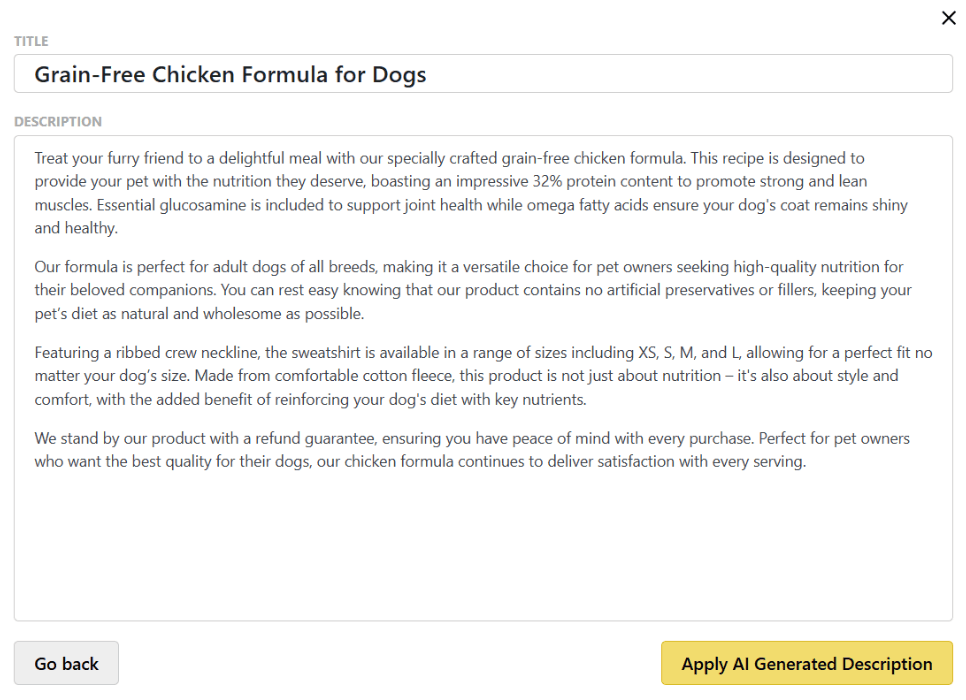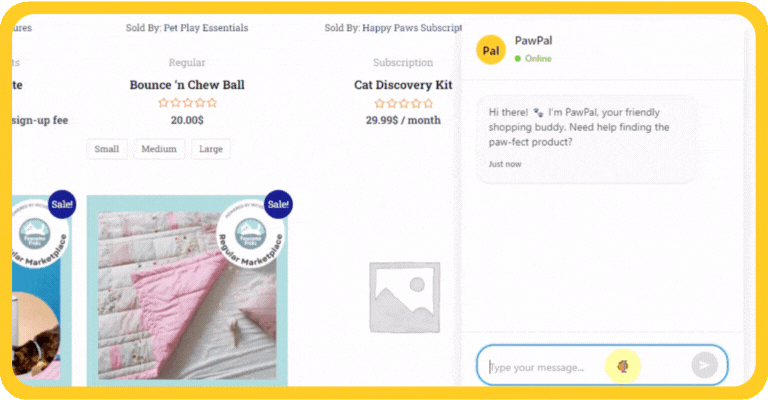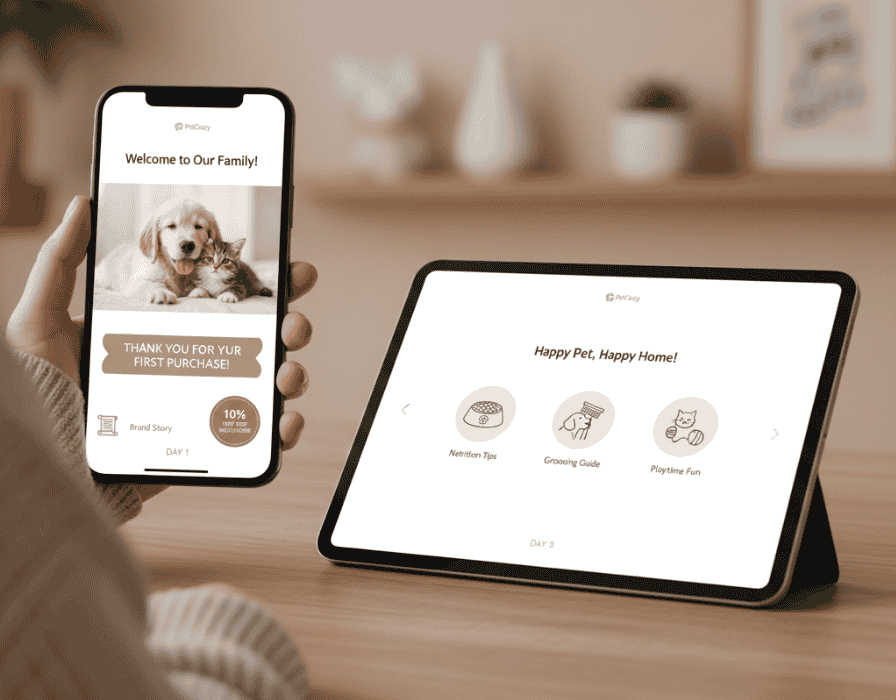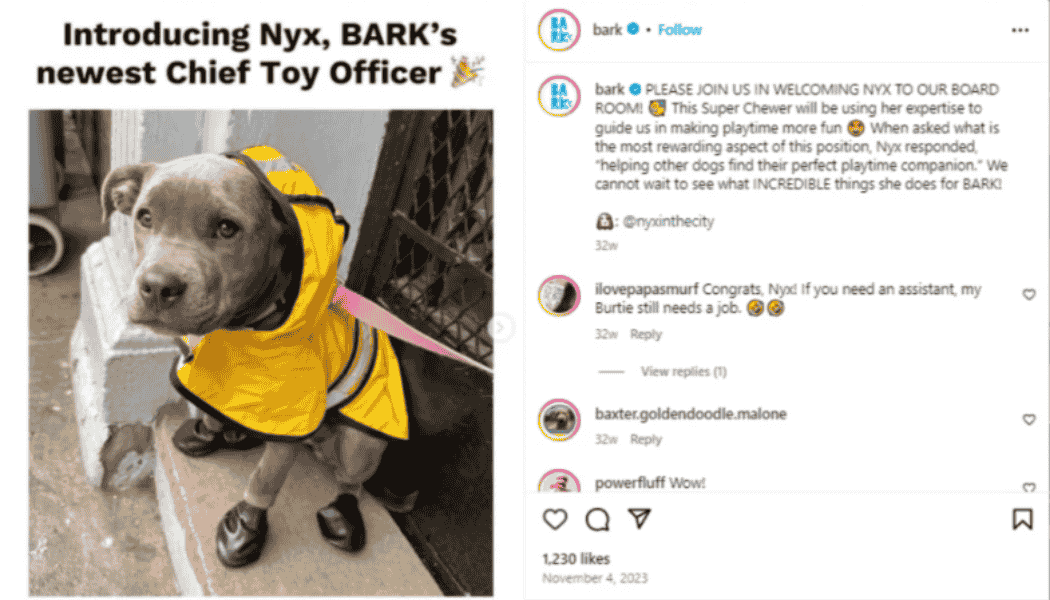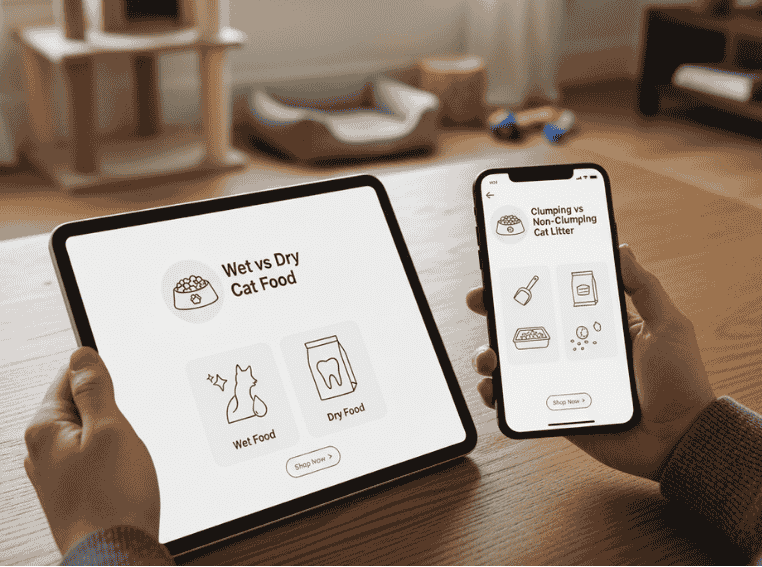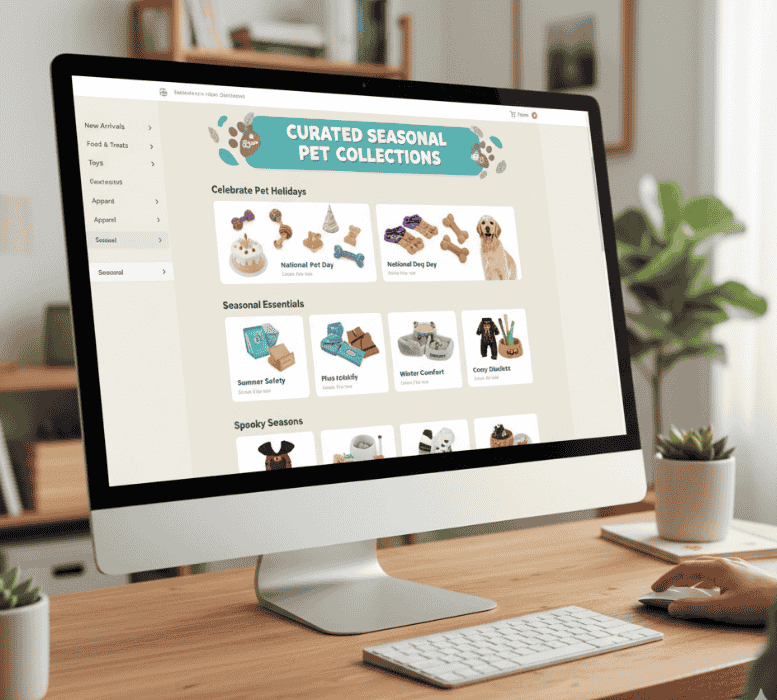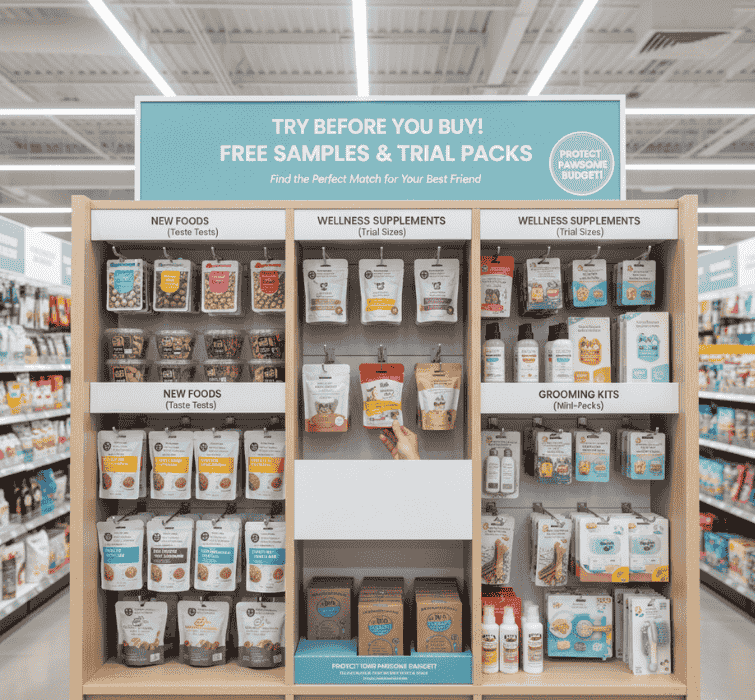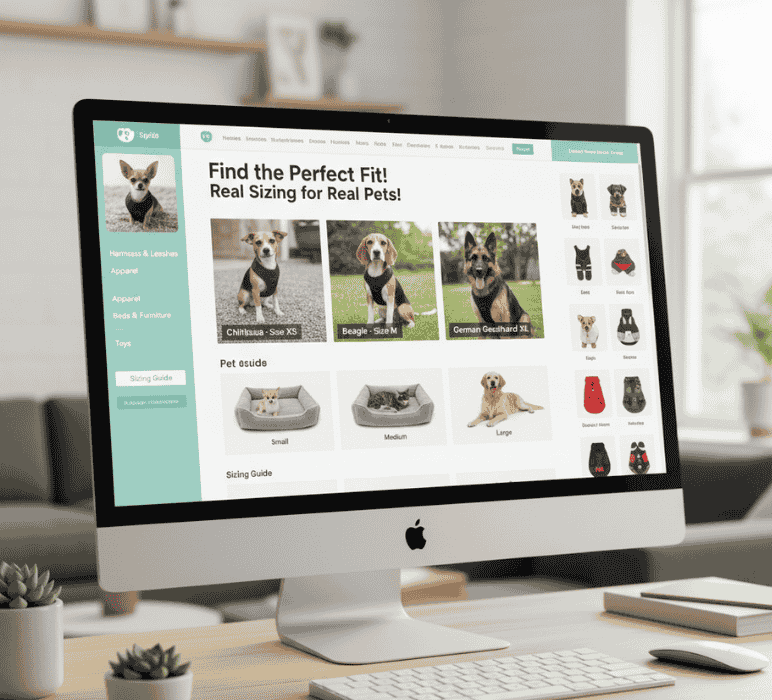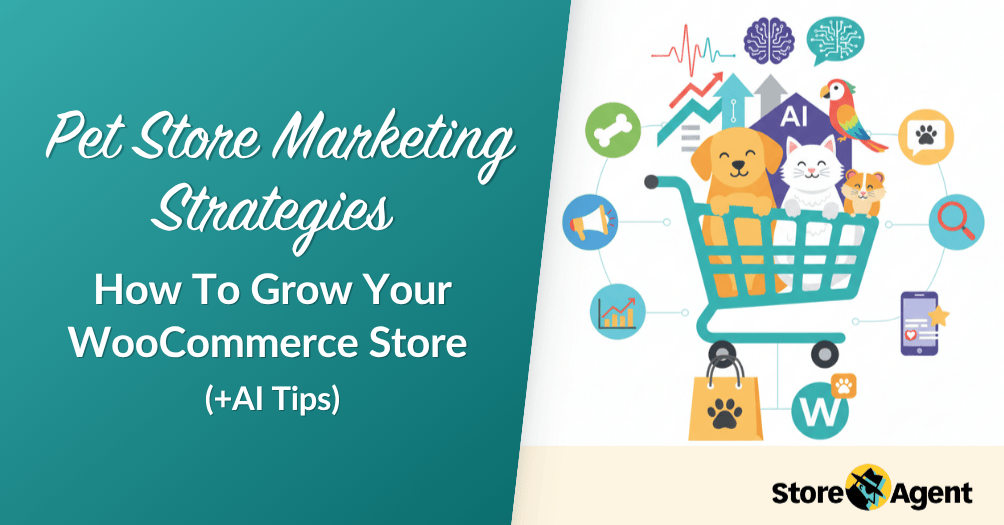
The pet industry generated $147 billion in 2024, with North America holding 40.2% of the market. However, competition is fierce. Effective pet store marketing strategies separate thriving WooCommerce stores from struggling ones.
Most pet store owners face the same obstacles. Writing product descriptions for hundreds of items takes too long. Customer questions pile up faster than you can answer them. Meanwhile, bigger brands have entire teams and unlimited budgets.
In this article, you’ll learn 8 proven pet store marketing strategies designed specifically for WooCommerce stores. These tactics help you compete with larger retailers while saving time through smart automation.
1. Write Benefit-Driven Product Descriptions
Pet store marketing starts with product pages. However, most stores list features without explaining benefits.
Pet owners need specific answers. Is this safe for puppies? Will it help with allergies? What size works for a 15-pound cat? Therefore, effective descriptions must include safety information, sizing guidance, health benefits, and care instructions.
Writing detailed descriptions takes 30 minutes per product. For 200 products, that’s 100 hours. Modern WooCommerce AI product description tools like StoreAgent solve this by generating optimized copy quickly. We tested it on 50 products and saved 90% of the time while maintaining quality and SEO optimization.
Before (Generic):
Premium dog food made with chicken. High in protein. Grain-free.
After (AI-Optimized with StoreAgent):
📝 AI Tip: Use StoreAgent’s short description generator for category pages and automatically generate product tags for better organization.
2. Deploy 24/7 AI-Powered Customer Support
Pet owners have urgent questions: “Is this safe for puppies?” “What size for a 15lb cat?” “Does this contain chicken?” However, providing 24/7 support is expensive for small teams.
StoreAgent’s AI chatbot connects directly to your WooCommerce catalog. This means it answers questions using your actual product data.
When customers ask “Where’s my order?” the chatbot securely requests their order ID. Then, it provides live shipping status instantly. Additionally, shoppers asking about prices get current pricing, including sales and discounts.
📝 AI Tip: StoreAgent Chat is fully multilingual, understanding and responding in dozens of languages. Furthermore, review chat logs in your dashboard to identify common questions and improve product information.
3. Launch Automated Email Marketing Campaigns
Email marketing remains one of the most cost-effective strategies. According to industry research, 35% of companies see $10-$36 return for every $1 spent on email.
Moreover, pet stores see higher-than-average open rates compared to other industries. Pet supplies are recurring purchases, making automated emails essential for pet store marketing.
Reorder reminder Strategy
Set up automated emails that trigger 2 weeks before typical reorder time:
“Time to restock Bella’s favorite food? Order now and save 10%.”
Include a one-click reorder button. This simple automation increases repeat purchases.
Pet birthday Campaigns
Collect pet birthdays during checkout. Then, send special birthday emails:
“Happy Birthday to Max! Here’s 20% off his favorite treats.”
This personal touch builds loyalty. As a result, customers feel connected to your brand.
Welcome Email Series
When someone makes their first purchase, send a 3-email series:
#1 Email (Day 1): Thank them + brand story + 10% off
#2 Email (Day 3): Pet care tips for their purchase
#3 Email (Day 7): Product recommendations + reviews
📝 AI Tip: Use automated segmentation based on pet type and purchase history. For instance, dog food buyers get canine care tips. Meanwhile, cat owners receive feline content.
4. Create User-Generated Content On Social Media
Pet content drives high social media engagement. Furthermore, user-generated content (UGC) builds trust faster than brand messages. Customers trust other customers more than marketing.
UGC contest strategy
Launch monthly photo contests with hashtags like #MyPetLoves[YourBrand]. Offer prizes like free products for a year. This accomplishes three goals: builds community, provides authentic content, and expands reach organically.
For example, run a “Best Pet Costume” contest in October. Winners get featured on your homepage. Runners-up receive store credit. Meanwhile, you collect hundreds of authentic photos for pet store marketing.
Short-form video strategy
TikTok and Instagram Reels drive massive traffic. However, authentic content performs better than polished videos. Share:
- Time-lapse of dogs enjoying toys
- Cat reactions to new treats
- Owner demonstrations of grooming tools
- Pet excitement when treat bags open
Educational quick-tip strategy
Share 15-second pet care tips:
- “3 Signs Your Dog’s Food Isn’t Working”
- “How to Tell If Your Cat Toy Is Safe”
- “Winter Pet Safety Checklist”
These tips position you as an expert. Additionally, they’re easy to create consistently.
📝 AI Tip: Use AI to analyze your most popular products and suggest social media topics. For instance, if grain-free dog food sells well, create content around “Understanding Grain-Free Diets for Dogs.”
5. Build Educational Content That Ranks
According to APPA data, research shows 50% of dog owners are new to pet ownership. They need guidance. Additionally, educational content builds authority while driving organic traffic.
Problem-solution content strategy
Create content around specific problems pet owners search for:
Instead of: “Dog Food Guide”
Write: “Why Is My Dog Not Eating? 7 Reasons and Solutions”
Instead of: “Cat Toys”
Write: “My Cat Ignores Every Toy: How to Find What They’ll Actually Play With”
These specific titles match actual search queries. Therefore, they rank higher and attract qualified traffic.
Comparison content strategy
Pet owners research before buying. Comparison content helps them decide while positioning your products:
- “Wet vs Dry Cat Food: Which Is Actually Better?”
- “Retractable vs Standard Leash: Pros and Cons”
- “Clumping vs Non-Clumping Cat Litter: Complete Guide”
Within comparisons, naturally link to products in each category.
Breed-specific authority strategy
Create deep content for popular breeds:
- “Complete Golden Retriever Care Guide: Food, Exercise, Health”
- “Best Products for Persian Cats: Grooming, Food, Supplies”
- “Bearded Dragon Setup: Everything You Need”
These guides attract highly qualified traffic. Moreover, they position you as THE authority for that pet type.
📝 AI Tip: Understand your target market and target audience to create more relevant content.
Check out our guide on how to write good product descriptions for tips that apply to blog content.
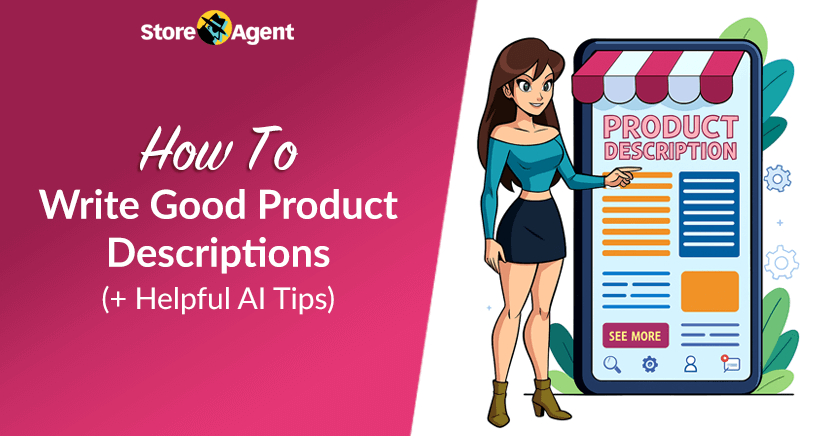
6. Curate Seasonal Product Collections
Nearly one-third of millennial and Gen Z pet owners throw pet-themed parties. Therefore, seasonal marketing works exceptionally well for pet stores. Additionally, planning ahead helps you capture early shoppers.
Curate special collections for pet holidays like National Pet Day (April 11) and National Dog Day (August 26). You can also create seasonal collections like “Winter Pet Essentials” or “Summer Safety Products.”
Give early access to seasonal products during off-peak times. For instance, offer pet rainwear collections during summer months. This strategy helps customers prepare in advance.
7. Offer Free Samples For New Products
Pet owners want proof before committing to new products. Therefore, sampling strategies work extremely well. Additionally, samples help you launch new products faster.
Offer trial packs instead of full-size products. Or, create bundles of multiple trial packs. This helps shoppers find the best match for their pets. It also protects your average order value.
This strategy works best for edible pet products. However, you can adapt it for other items. For pet clothing or accessories, offer a trial period. During this time, customers can return items for free.
📝 AI Tip: Use AI to identify which customers are most likely to buy after trying samples. Then, target them with personalized follow-up emails featuring the full-size products.
8. Use Product Images That Show Real Sizing
Pet owners struggle with sizing more than any other question. Therefore, product images must answer these questions instantly.
Show your products on actual pets of different sizes. For example, display the same dog harness on a Chihuahua, Beagle, and German Shepherd.
Additionally, use infographic-style images that show breed-specific sizing. This visual approach answers sizing questions immediately.
Quick Comparison: Traditional VS AI-Powered Pet Store Marketing
Here’s how AI automation compares to traditional methods for common pet store tasks:
| Task | Traditional | With StoreAgent | Savings |
|---|---|---|---|
| Product Descriptions | 30 min each | 3 min with AI | 90% |
| Customer Support | Business hours only | 24/7 AI chatbot | 100+ hours/month |
| Product Tagging | Manual, inconsistent | AI-generated | 85% |
These strategies work across ecommerce niches. Check out our 15 Best Fashion Marketing Strategies That Drive Sales In 2025 guide for apparel brands.
Start Growing Your Pet Store Today
The pet industry offers incredible opportunities for WooCommerce store owners. However, success requires more than great products. These pet store marketing strategies help you compete while saving time through automation.
Here’s a quick recap of these 8 proven strategies:
- Write Benefit-Driven Product Descriptions
- Deploy 24/7 AI-Powered Customer Support
- Launch Automated Email Marketing Campaigns
- Create User-Generated Content On Social Media
- Build Educational Content That Ranks
- Curate Seasonal Product Collections
- Offer Free Samples For New Products
- Use Product Images That Show Real Sizing
Start with high-impact tactics. Use a WooCommerce AI plugin like StoreAgent to automate product descriptions, saving dozens of hours weekly. Then, implement AI chat for 24/7 support. Finally, launch automated email campaigns for recurring revenue.
Ready to automate your pet store marketing? Check out StoreAgent’s plans and discover how AI can transform your WooCommerce store today.
Frequently Asked Questions
What pet store marketing strategies work best for small budgets?
Start with AI-powered product descriptions and automated email campaigns. These two tactics alone can save 100+ hours monthly while delivering measurable ROI. Both offer high ROI without ongoing costs. Additionally, social media content is free but requires time. Focus on user-generated content to reduce workload. Tools like StoreAgent let small teams compete by automating time-consuming tasks.
How do I compete with big pet brands like Chewy?
Focus on niche expertise. Use AI to match their efficiency while specializing. For instance, become the go-to store for exotic reptiles or organic cat food. Build community through content and social media. These tactics let small stores compete without matching big budgets.
Should I use AI for pet product descriptions?
Yes. AI dramatically reduces time while improving consistency and SEO. However, always review content for accuracy, especially safety information. StoreAgent can be customized to match your brand voice. The key is using AI to enhance your expertise, not replace it.
How important are product tags for pet stores?
Tags are critical for user experience and SEO. They help customers filter by pet type, size, and dietary needs. Additionally, search engines use tags to understand products better. StoreAgent’s AI generates consistent tags automatically across your catalog.
